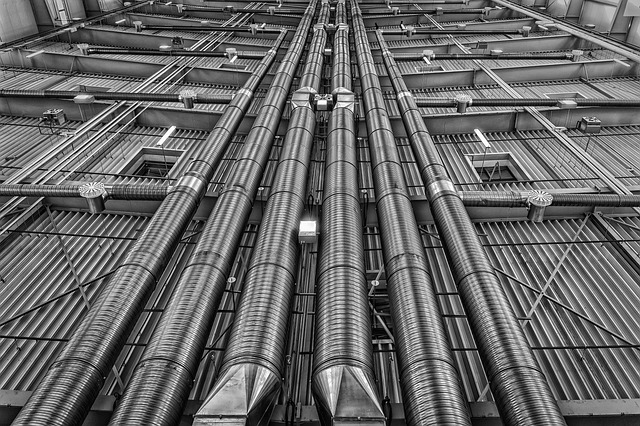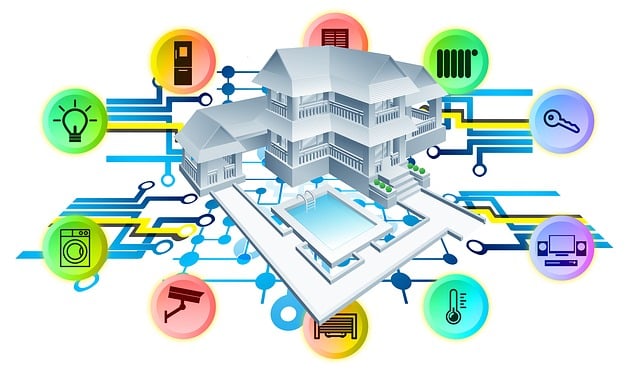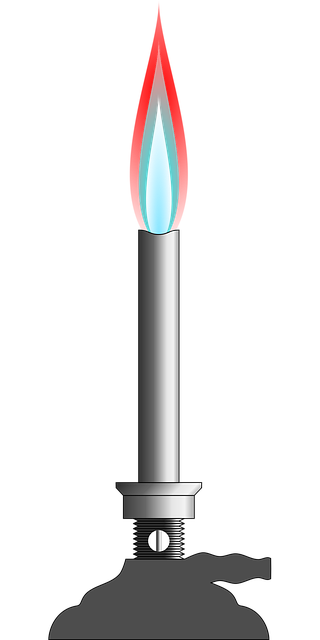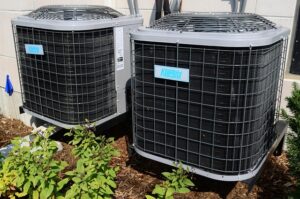Unit heaters, like gas-fired and electric models, enhance heat recovery in commercial and industrial settings, especially warehouses. They offer energy efficiency, swift response times, and consistent temperatures via ceiling-mounted designs. Advanced condensing technology further improves BTU capacity and sustainability. Future trends focus on smart controls and precise heating for optimal, waste-free unit heater performance.
Unit heaters, essential for space heating, are undergoing a transformation with the advent of condensing technology. By capturing and utilizing heat that would otherwise be wasted, condensing unit heaters offer significant energy efficiency gains. This article delves into the fundamentals of unit heaters, explores heat recovery as a critical component of energy efficiency, examines strategies to maximize recovery in these advanced systems, and discusses emerging trends shaping the future of heating.
- Understanding Unit Heaters: Basics and Benefits
- Heat Recovery: A Key to Energy Efficiency
- Maximizing Recovery in Condensing Unit Heaters
- Practical Applications and Future Trends
Understanding Unit Heaters: Basics and Benefits

Unit heaters are essential components in various heating systems, designed to efficiently warm up specific areas within commercial and industrial spaces like warehouses. These heaters operate by circulating hot air or water to create a comfortable indoor environment, ensuring optimal temperature control. The primary advantage lies in their ability to maximize heat recovery, making them highly efficient compared to traditional forced air heating methods.
Gas fired units, electric heaters, and suspended heaters are popular choices, each offering unique benefits. Electric heaters, for instance, are known for their energy efficiency and ease of installation, while gas fired units provide faster response times due to direct combustion. In industrial spaces with high BTU capacity requirements, these heaters play a pivotal role in maintaining consistent temperatures, making them indispensable for various applications, from warehouse environments to ceiling-mounted systems.
Heat Recovery: A Key to Energy Efficiency

Heat recovery is a critical aspect when it comes to enhancing energy efficiency, especially in commercial and industrial spaces like warehouses. Unit heaters, such as gas fired units or electric heaters, can significantly improve overall heating systems by capturing and utilizing wasted heat. This process involves extracting warmth from exhaust air or residual heat within the building envelope and redistributing it to maintain comfortable temperatures.
By implementing heat recovery strategies, especially with ceiling-mounted suspended heaters, these industrial spaces can reduce energy consumption and operating costs. For instance, forced air heating systems equipped with heat recovery mechanisms can increase BTU capacity, ensuring optimal warmth distribution while minimizing energy wastage. This is particularly beneficial for large commercial and industrial settings where efficient heating solutions are essential to maintain productivity and comfort throughout the year.
Maximizing Recovery in Condensing Unit Heaters

Condensing unit heaters play a pivotal role in maximizing heat recovery, significantly enhancing efficiency in various commercial and industrial settings, such as warehouse applications. By capturing and utilizing latent heat from exhaust gases, these advanced heating systems extract more energy from combustible fuels like gas fired units or electric heaters. This process effectively increases the BTU capacity of forced air heating, ensuring optimal temperature control in large spaces, including industrial and ceiling-mounted setups.
Compared to traditional heating methods, suspended heaters often prove superior due to their ability to integrate heat recovery technology. This not only reduces energy costs but also contributes to environmental sustainability. In commercial heating scenarios, the efficiency boost from condensing unit heaters translates to lower operational expenses and more comfortable, well-heated industrial spaces.
Practical Applications and Future Trends

In practical applications, unit heaters play a pivotal role in enhancing heat recovery and efficiency, especially in industrial spaces like warehouses and commercial heating environments. These compact devices, which can be gas fired units or electric heaters, are designed to maximize BTU capacity through innovative forced air heating mechanisms. Their ceiling-mounted design allows for even distribution of warmth, making them ideal for large, open industrial spaces where maintaining a comfortable temperature is paramount.
Looking ahead, the future trends in unit heater technology suggest an increased emphasis on sustainability and smart controls. As environmental concerns mount, manufacturers are exploring more energy-efficient models, including suspended heaters that offer precise heating without wasting heat. This shift towards eco-friendly solutions promises to revolutionize commercial and industrial heating systems, ensuring optimal efficiency while minimizing environmental impact.
Condensing unit heaters offer a promising path towards energy-efficient heating, maximizing heat recovery and significantly improving overall system efficiency. By leveraging advanced technologies, these heaters are revolutionizing the way we heat our spaces, making them an increasingly popular choice for both residential and commercial applications. As research continues to explore innovative solutions, the future of heating looks brighter and more sustainable with unit heaters at the forefront.
